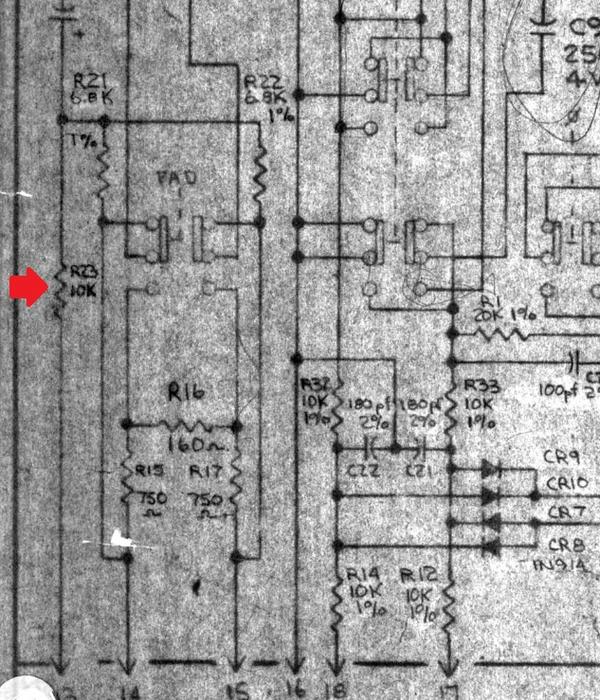Just wanted to say I successfully installed Capi's 2 stage line amp in my Yamaha PM2000 input channel.
So here's what I have right now:
Strictly line ins (I have enough preamps) The balanced input goes to the inputs of Pier Paulo Abbate's APP992 opamp (via the CMRR network) On the output of the first stage I've wired in Yamaha's existing inserts (just unbalanced switching jack inserts, no transformer) which return to the on/off switch like in Boji's/API schematic. Then to the fader, then on to the second stage where I'm using Yamaha's discrete 80100 DOA. The output of this successfully feeds my 8 buses (spelled it right Abbey!) and 6 auxes.
Using the console's +/-24V rails, I can't use 2520's, nor do I want to, with Yamaha supplying a lot of DOA's for me already.
Anyway, the sound is . .. . fabulous.
Now I need to figure out if I can insert Yamaha's eq stage with no insterstage transformer, but very short cable run, and the elimination of the first pair of 10K resistors on the input. So I guess I'll be hitting the first opamp harder, but then again the APP992 has headroom for days.
Okay, one question for now though. On the CAPI site, Jeff mentions the trimmer for the second stage opamp as a place that one could take an extra gain control out to the front panel (rather that setting the trimmer on the card, or a fixed value, like 20K in API's case) This is the usual feedback gain adjustment spot.
The BOM for the CAPI 2SLA lists this trimmer as 10K-25K, so I tried a 10K log pot but it didn't do anything. I'm guessing I would need a rev log 20-25K pot like in a 312? But that's a mic amp. But shouldn't the gain pot match the feedback resistor value?
And this brings up the question of whether is makes sense to have this extra gain control in the second stage? So, after the fader. Why not have it in the first stage, so you could possibly bring down a 'juiced up' first stage with the fader? And have the second stage fixed gain.
From the Boji schematic though, it looks like the API line mode has both opamps fixed gain with the fader as the only vol. control. Fine I'm sure, but I do have a hole in my channel strip that needs filling as I removed the Yamaha input switch assembly. So a simple gain pot would do that nicely, and allow some more flexibility (?)





























![Electronics Soldering Iron Kit, [Upgraded] Soldering Iron 110V 90W LCD Digital Portable Soldering Kit 180-480℃(356-896℉), Welding Tool with ON/OFF Switch, Auto-sleep, Thermostatic Design](https://m.media-amazon.com/images/I/41gRDnlyfJS._SL500_.jpg)





